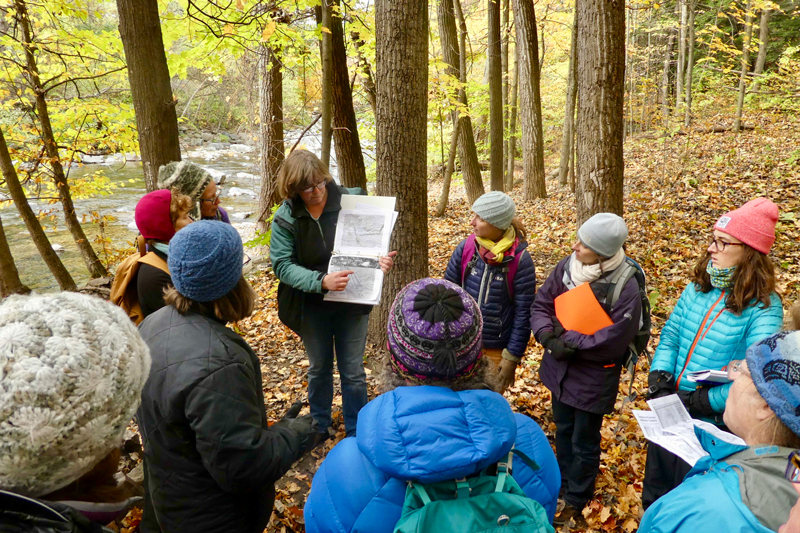Love nature and care about protecting what’s special about the Mad River Valley? Curious and enjoy being part of a community of learners? Anyone who answered yes has a chance to become a Master Naturalist. Vermont Master Naturalist is coming to the Mad River watershed in 2020.
The Vermont Master Naturalist Program (VMN) began in Burlington in 2016 and has since expanded into 18 towns in Vermont. VMN is led by Alicia Daniel who, after 30 years of teaching in the University of Vermont’s Field Naturalist Master of Science Program, adapted the landscape-level approach to understanding ecosystems developed at UVM to help Vermont residents gain new insights into the nature around them and encourage use of their learning in conservation efforts in their communities.
Friends of the Mad River and the Vermont Alliance for Half-Earth are collaborating with VMN to bring the program to The Valley for the first time. The Mad River Valley is a watershed with a rich cultural heritage and habitat ranging from montane forests to dry oak hilltops and spruce swamps. Vermont Master Naturalist classrooms will be located in The Valley with stories to tell, like wildlife corridors, woodlands of wildflowers, stone walls and cellar holes, and the ever-meandering banks of the Mad River.
During a series of five daylong field trips (from March to October 2020), 15 participants will spend time at interesting sites across The Valley reviewing layers of the landscape, like geology, soils, hydrology, plants and animals (natural communities), as well as signs of processes like human land use history, river geomorphology, wind or fire that have shaped The Valley. VMN faculty will help participants learn to read these layers and tell stories of its natural and cultural history. Participants will also consider the importance of biodiversity in functioning ecosystems as advanced by biologist E.O. Wilson and the Half-Earth Project.
To practice their new skills and as a way of giving back to the community, teams of participants will work on local conservation education and stewardship projects.
“As a graduate of UVM’s Field Naturalist Graduate Program, I’m thrilled Friends can help bring this unique and fun way of thinking about a landscape to the Mad River community,” said Corrie Miller, executive director of Friends of the Mad River. “I’m looking forward to learning along with my neighbors and celebrating the stories our watershed tells.”
“The Vermont Master Naturalist Program builds community and connects Vermonters to their place through professional training and local volunteer projects,” said Alicia Daniel. “And, we hope it serves to engage more people in planning and conservation of their special wild places.”
For general information about VMN visit vermontmasternaturalist.org. For questions about the Mad River Valley offering, contact Curt Lindberg, the coordinator of the VMN Mad River Valley Program and the Vermont Alliance for Half-Earth, by phone at 609-647-9832 or email at
To apply for the VMN Mad River Valley Program in a simple online format, visit https://forms.gle/SW9mT8GyBLyt2KQN6. Applications are due December 15, 2019.
To download a PDF to print or fill in, visit friendsofthemadriver.org, click on “Join Vermont Master Naturalist Mad River Valley Program” and follow the prompts.







